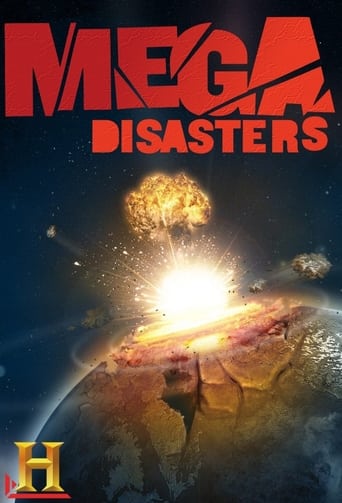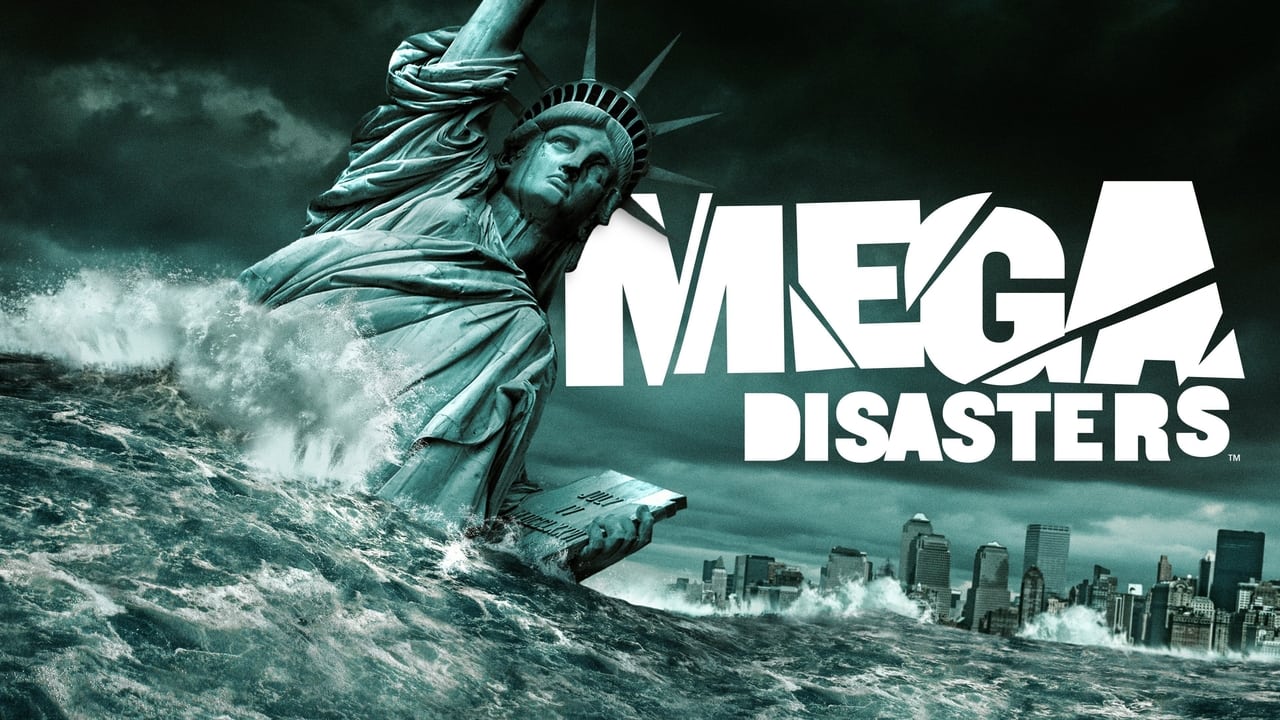Mega Disasters Season 2
Mega Disasters is an American documentary television series that originally aired from May 23, 2006 to July 2008 on The History Channel. Produced by Creative Differences, the program explores potential catastrophic threats to individual cities, countries, and the entire globe. The two "mega-disasters" of the 2004 Indian Ocean tsunami and Hurricane Katrina in 2005 inspired the series and provided a reference point for many of the episodes. Excepting only two shows devoted to man-made disasters, the threats explored can be divided into three general categories: meteorological, geological, and cosmic hazards.
With 30 Day Free Trial!
Mega Disasters
2006
Mega Disasters is an American documentary television series that originally aired from May 23, 2006 to July 2008 on The History Channel. Produced by Creative Differences, the program explores potential catastrophic threats to individual cities, countries, and the entire globe. The two "mega-disasters" of the 2004 Indian Ocean tsunami and Hurricane Katrina in 2005 inspired the series and provided a reference point for many of the episodes. Excepting only two shows devoted to man-made disasters, the threats explored can be divided into three general categories: meteorological, geological, and cosmic hazards.
Watch Trailer
Mega Disasters Season 2 Full Episode Guide
In AD 79, Mount Vesuvius buried Pompeii and killed 5,000 people. The volcano is quiet at the moment, but the only consistency in Vesuvius' eruptive history is a lack of consistency. The danger zone that surrounds the volcano includes the city of Naples and its one million residents; another two million people reside nearby. Scientists know that when Vesuvius erupts again they won't have much warning and another major metropolis will be destroyed.
It has been a century since the infamous 1906 San Francisco earthquake and Californians live with the knowledge that it's only a matter of time before they're hit again. Los Angeles is the second most populous city in America. If an earthquake hit directly beneath downtown LA, scientists believe that tens of thousands would be killed. Just how would the city respond to a 7.5 magnitude quake? Take a look at how well the emergency responders could cope. A CGI worst-case scenario will show the incredible damage and destruction that would cripple one of the most important cities in the world.
The oil that our world runs on won't last forever. The gap between supply and demand is ever increasing. Will alternative energy save us or is it already too late? What would happen to the world as we know it when our oil dependent industries come to a grinding halt? A worldwide depression is a certainty but a power struggle for the basic necessities of life would be complete chaos.
The locust is one of the most destructive and dreaded life forms on Earth. American pioneers faced the largest swarm of locusts ever recorded. The 1,800 mile long and 110-mile-wide cloud of insects ate their way through the heartland and blocked the sun for five days. Famine ensued, and thousands faced starvation. According to recent studies, the possibility of such a swarm returning to the United States is very likely. The destruction would be unimaginable. This scenario is now generally believed by entomologists to be impossible. The Rocky Mountain locust, the insect responsible for the aforementioned swarm, has not been sighted since 1902. Efforts to breed modern North American grasshoppers to recreate the locust have all failed, and recent mitochondrial DNA analysis has strongly suggested that the Rocky Mountain locust was a distinct species.
Trends indicate that a major drought event is looming in the not-too-distant future. In as few as three decades we could experience conditions that would make the Dust Bowl of the 1930s seem like an oasis. Efforts to conserve, while admirable and desperately necessary, may already be too late. The episode projects a scenario seventy years into the future in which a twelve-year drought leaves the United States unstable and economically depressed. Western cities are abandoned, states clash for dwindling water supplies and society devolves into a battle for survival.
An earthquake in New York City may seem like the plot of a bad movie, but a magnitude 5 quake occurred in 1884 and could happen again. Two faults run under Manhattan Island, including the 125th Street Fault where the landscape dips and the subway crosses on an open bridge. Since skyscrapers are designed to withstand windspeeds of 100 mph, most would survive sans windows; however, mid-sized masonry structures would collapse. As well, buildings (including smaller skyscrapers) built on landfill in Battery Park are subject to soil liquefaction, tipping over entirely in a major earthquake.
Could an alien infection cause an epidemic on earth? Some experts believe that spacecraft returning from Mars could bring back a harmful sample or comet dust falling into our atmosphere could cause pandemics. One astronomer believes that the 1918 flu pandemic, which killed between 50-100 million people, was one such outbreak and that another "infection" could decimate the world's population. Astrobiologists are now poised to bring Mars samples back to earth to examine them in a Bio 4 level safety lab. In a hypothetical future disaster scenario, track how comet dust would seed the earth with a virulent virus. Quarantine measures don't work and panic ensues.
Methane gas precipitates out of the Earth's crust but is easily diluted in the air and in the oceans. Yet, according to one scientist, certain oceanic conditions could trap the gas in regions with low water circulation and build up extreme pressure. Once these areas are disturbed, the gas would blow out of the ocean in powerful jets. If they ignited before diluting, the explosion could cause widespread devastation. The scientist also posits that a similar event caused the Permian extinction.
The shield volcanoes that make the Hawaiian Islands will erupt again and cause major destruction by earthquakes and massive lava flows.
As temperatures rise, a global meltdown has begun. From the Andes to the Himalayas to the Alps, glaciers are vanishing. In Antarctica and Greenland, vast ice sheets are turning into liquid. The melting ice, running off land, is raising sea levels. As sea levels rise, oceans throughout the world are also becoming hotter. Warmer seas fuel more intense hurricanes. Already, major catastrophes brought on by the process of melting ice, rising seas and intensifying storms have occurred in coastal communities around the world: the South Pacific, Bangladesh and—closer to home—New Orleans. Scientists predict that the worst is yet to come. The rising oceans may swallow some lands forever. By the turn of the century, the map of the world may need to be redrawn and a Category 4 hurricane could drown much of Washington, D.C. in 15 feet of water.
The 1883 eruption of Krakatoa was one of the deadliest natural disasters in recorded history, claiming over 36,000 lives by the tsunamis it triggered. Another volcanic eruption at Krakatoa, now called Anak Krakatau (meaning "Child of Krakatoa" in Indonesian), could spell curtains for Indonesia.
A comet is imagined to strike the Earth and cause major devastation.
Every few seconds, a supernova emits jets of deadly gamma rays somewhere in the galaxy. If one of these gamma ray bursts should happen sufficiently close to the solar system, all life would perish.
Free Trial Channels
Seasons






















